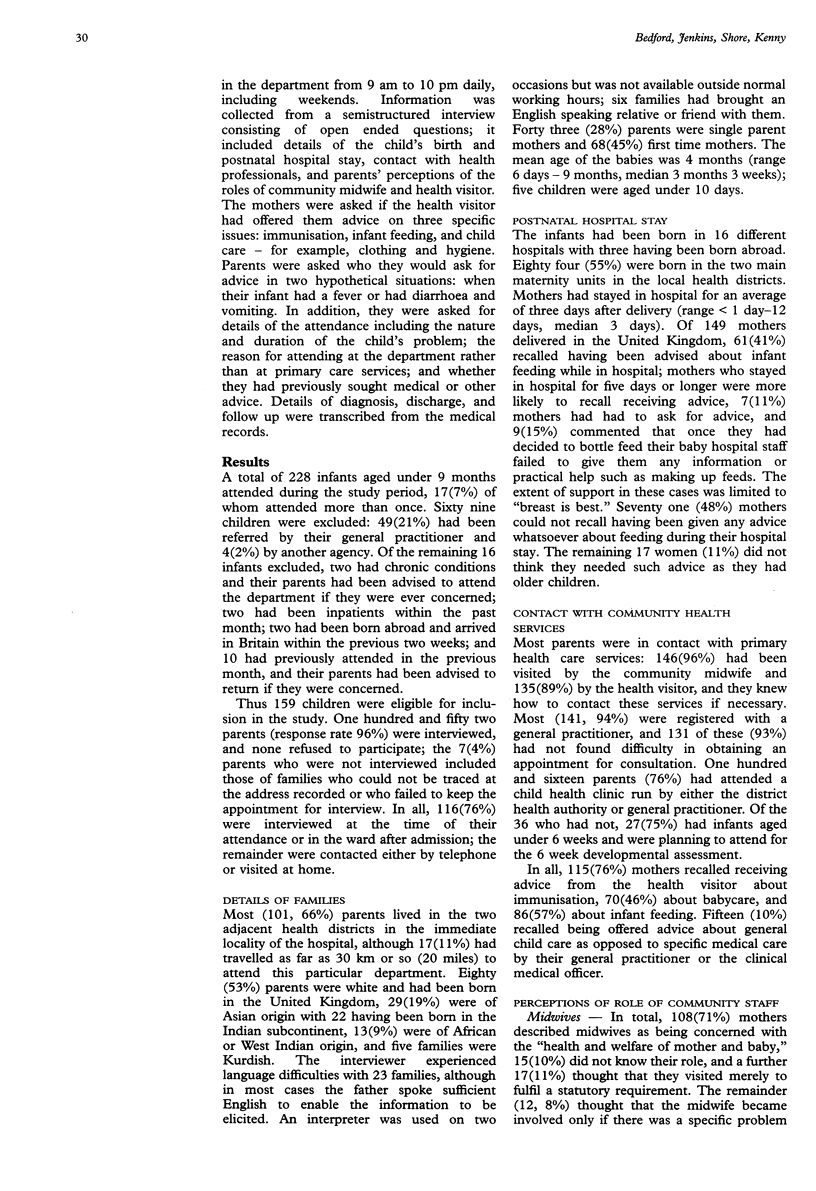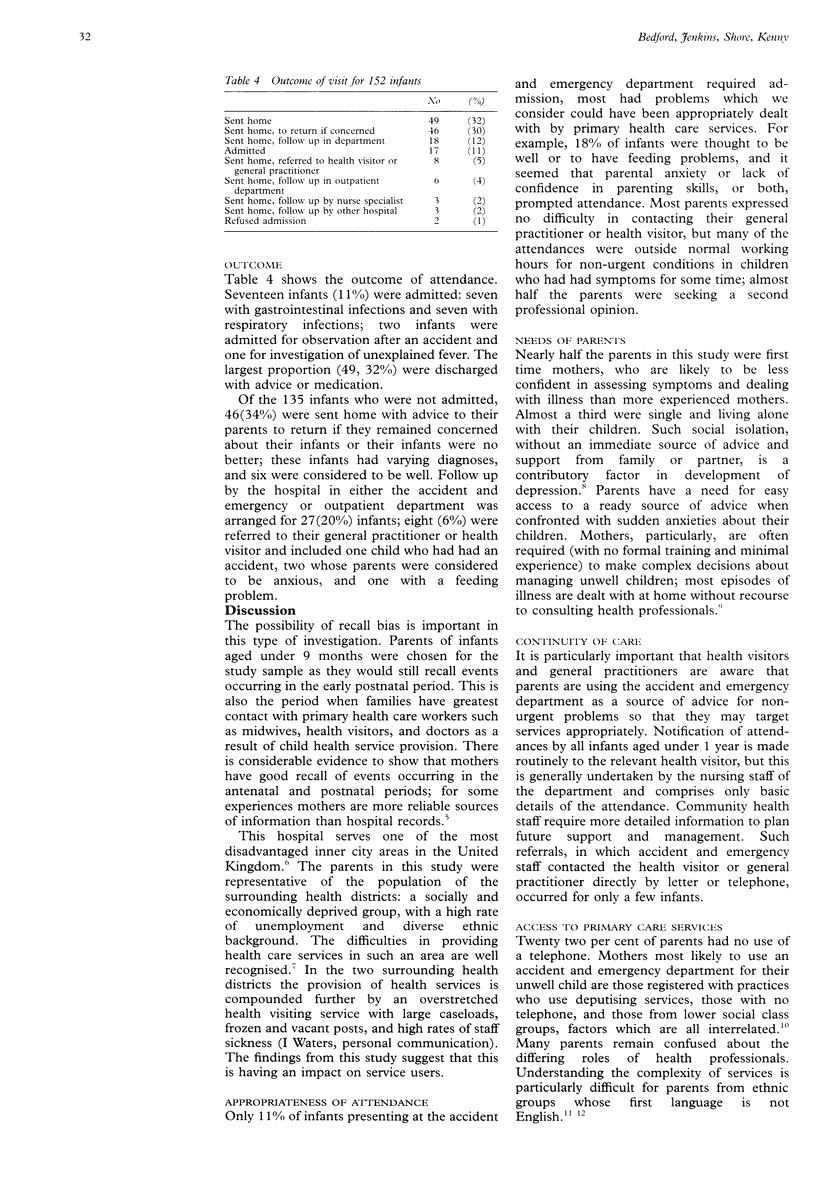Abstract
OBJECTIVE--To ascertain why parents use an accident and emergency department for health care for their infants. DESIGN--Prospective one month study. SETTING--One accident and emergency department of a children's hospital in the east end of London. SUBJECTS--Parents of 159 infants aged < 9 months attending as self referrals (excluding infants attending previously or inpatients within one month, parents advised by the hospital to attend if concerned about their child's health, infants born abroad and arrived in Britain within the previous month). MAIN MEASURES--Details of birth, postnatal hospital stay, contact with health professionals, perceptions of roles of community midwife and health visitor, and current attendance obtained from a semistructured questionnaire administered in the department by a research health visitor; diagnosis, discharge, and follow up. RESULTS--152(96%) parents were interviewed, 43(28%) of whom were single parent and 68(45%) first time mothers. Presenting symptoms included diarrhoea or vomiting, or both (34, 22%), crying (21, 14%), and feeding difficulties (10, 7%). Respiratory or gastrointestinal infection was diagnosed in 70(46%) infants. Only 17(11%) infants were admitted; hospital follow up was arranged for 27(20%) infants not admitted. Most (141, 94%) parents were registered with a general practitioner; 146(27%) had contact with the community midwife and 135(89%) the health visitor. CONCLUSION--Most attendances were for problems more appropriately dealt with by primary care professionals owing to patients' perceptions of hospital and primary health care services. IMPLICATIONS--Closer cooperation within the health service is needed to provide a service responsive to the real needs of patients.
Full text
PDF




Selected References
These references are in PubMed. This may not be the complete list of references from this article.
- Bowling A., Isaacs D., Armston J., Roberts J. E., Elliott E. J. Patient use of a paediatric hospital casualty department in the east end of London. Fam Pract. 1987 Jun;4(2):85–90. doi: 10.1093/fampra/4.2.85. [DOI] [PubMed] [Google Scholar]
- Clark J. Mothers' perceptions of health visiting. Health Visit. 1984 Sep;57(9):265–268. [PubMed] [Google Scholar]
- Farquhar M. The use and mis-use of paediatric casualty. Nurs Stand. 1990 Mar 21;4(26):34–35. doi: 10.7748/ns.4.26.34.s36. [DOI] [PubMed] [Google Scholar]
- Jarman B. Identification of underprivileged areas. Br Med J (Clin Res Ed) 1983 May 28;286(6379):1705–1709. doi: 10.1136/bmj.286.6379.1705. [DOI] [PMC free article] [PubMed] [Google Scholar]
- Martin C. J. Monitoring maternity services by postal questionnaire: congruity between mothers' reports and their obstetric records. Stat Med. 1987 Jul-Aug;6(5):613–627. doi: 10.1002/sim.4780060510. [DOI] [PubMed] [Google Scholar]
- Watson E. Health of infants and use of health services by mothers of different ethnic groups in East London. Community Med. 1984 May;6(2):127–135. [PubMed] [Google Scholar]
- Wilkinson A., Kazantzis G., Williams D. J., Dewar R. A., Bristow K. M., Miller D. L. Attendance at a London casualty department. J R Coll Gen Pract. 1977 Dec;27(185):727–733. [PMC free article] [PubMed] [Google Scholar]


